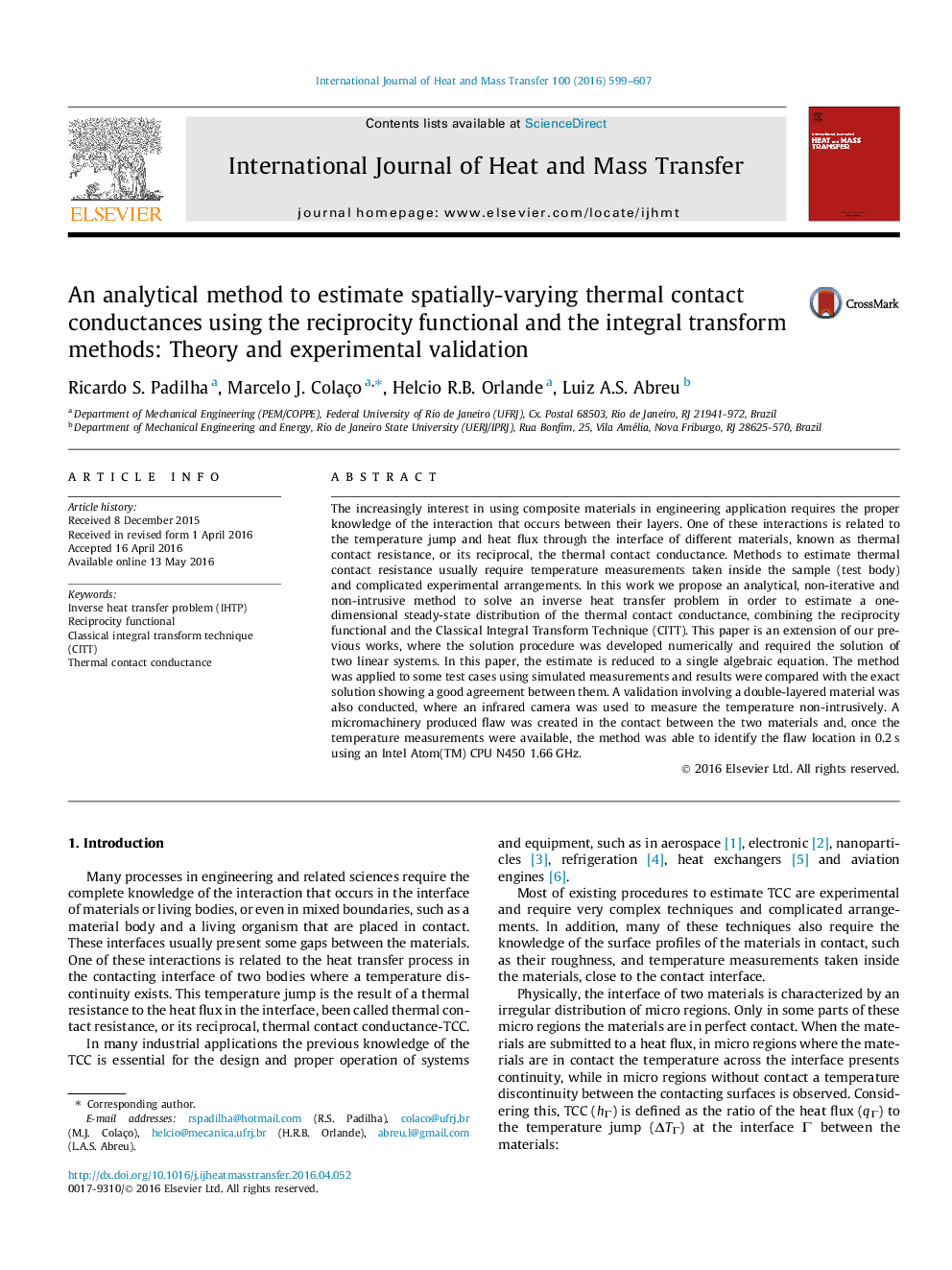| کد مقاله | کد نشریه | سال انتشار | مقاله انگلیسی | نسخه تمام متن |
|---|---|---|---|---|
| 656387 | 1458042 | 2016 | 9 صفحه PDF | دانلود رایگان |
• Analytical technique to estimate thermal contact conductances.
• Non-intrusive and non-iterative technique.
• Computationally fast technique.
• Numerical and experimental results are presented, considering measurement noise.
• Results comparable to traditional (more expensive) techniques.
The increasingly interest in using composite materials in engineering application requires the proper knowledge of the interaction that occurs between their layers. One of these interactions is related to the temperature jump and heat flux through the interface of different materials, known as thermal contact resistance, or its reciprocal, the thermal contact conductance. Methods to estimate thermal contact resistance usually require temperature measurements taken inside the sample (test body) and complicated experimental arrangements. In this work we propose an analytical, non-iterative and non-intrusive method to solve an inverse heat transfer problem in order to estimate a one-dimensional steady-state distribution of the thermal contact conductance, combining the reciprocity functional and the Classical Integral Transform Technique (CITT). This paper is an extension of our previous works, where the solution procedure was developed numerically and required the solution of two linear systems. In this paper, the estimate is reduced to a single algebraic equation. The method was applied to some test cases using simulated measurements and results were compared with the exact solution showing a good agreement between them. A validation involving a double-layered material was also conducted, where an infrared camera was used to measure the temperature non-intrusively. A micromachinery produced flaw was created in the contact between the two materials and, once the temperature measurements were available, the method was able to identify the flaw location in 0.2 s using an Intel Atom(TM) CPU N450 1.66 GHz.
Journal: International Journal of Heat and Mass Transfer - Volume 100, September 2016, Pages 599–607
